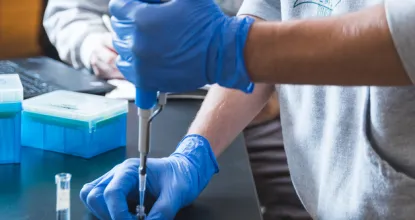Hannah Cavalieri
Assistant Professor
Contact Information:
Bio:
Dr. Cavalieri completed a dual-degree program at Michigan State University, where she earned a Master’s Degree in Forensic Chemistry with a focus in drug chemistry and a Ph.D. in Analytical Chemistry with a
specialization in radioanalytical chemistry and gas-phase separations. Under the guidance of Dr. Ruth
Smith, her Master’s thesis research involved utilizing a previously developed statistical comparison
method to differentiate both positional and structural isomers of fentanyl analogs. The statistical
comparisons were performed using Microsoft Excel. Under the guidance of Dr. Greg Severin, her Ph.D.
research involved the development and testing of an isotope harvesting system used as a flowing-water
target inserted into an accelerated beam at the National Superconducting Cyclotron Laboratory at MSU.
Her specific project encompassed the development of a novel method of collecting radioactive krypton
isotopes from the off-gas of the harvesting system to generate isotopes of bromine through radioactive
decay. These bromine isotopes are useful in nuclear medicine applications.
Dr. Cavalieri's research at NMU applies analytical chemistry methods to plant and soil chemistry as well as forensic chemistry. Dr. Cavalieri is interested in detecting and quantifying heavy metal contamination in UP soil samples that lead to phytoremediation of such metals in hemp plants using ICP-MS analysis methods. The state of Michigan has regulations for "the big four" metal toxins (arsenic, cadmium, lead, and mercury), but does not regulate for other metals that pose a threat to human health (such as copper, zinc, silver, and chromium). Another area of interest is the inhalation risk of toxins and heavy metals to cannabis smokers, specifically the use of metal organic frameworks (MOFs) to filtrate cannabis product smoke.
In application to forensic science, analysts face challenges in identifying gunshot wounds, especially in instances of decomposing body tissues under a range of environmental factors. Dr. Cavalieri is interested in simulating gunshot wounds in skeletal tissues and cloth materials to be quantified using ICP-MS as well as characterized with SEM-EDS and µXRF in collaboration with Lake Superior State University. Studies would be performed during different seasons over a range of controlled time studies in order to statistically compare variables such as bullet caliber, shooting distance, decomposition time, and environmental exposure factors.

